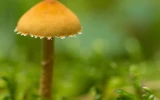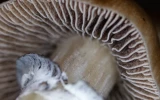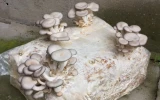How To Tell When Mycelium Is Fully Colonized (Look For This)
If you just started growing your own mushrooms, you may be wondering how to tell when your mycelium is fully colonized. It's not difficult to tell, as there will be obvious visual cues, smell indicators, and changes in texture and consistency that will indicate that the colonization process is complete. In this article, we'll cover some simple tips and tricks to help you identify when your mycelium is fully colonized.
When mycelium is fully colonized, it should have an off-white color with no brown, blue, or green spots. You will see pinheads forming, and the substrate will have a strong, earthy mushroom smell. A fully colonized mycelium will also have a firm and compact texture, with no visible patches of an uncolonized substrate.
One way to check if the substrate has been fully colonized is to use a sterile needle or toothpick, insert it into the substrate, and check to see if it comes out clean. If the substrate is fully colonized, the needle or toothpick will come out clean. Let's learn more tips on how to carefully check if colonization has been completed in the article below.
Summary
- A fully colonized mycelium will exhibit an off-white coloration. Pinheads will also be visible in the substrate, and the substrate will have a strong mushroom smell.
- There are many benefits to knowing if the mycelium has fully colonized the substrate. It helps you know if you can start subjecting your mushrooms to ideal fruiting conditions to maximize your yield. It can therefore help to prevent contamination and help you save time and resources as well.
- If you want to check if colonization is complete aside from the visual and olfactory cues, you can cut open the substrate using a sterilized knife, use a sterile needle or toothpick and insert it inside the substrate, or use a microscope to confirm if colonization is done.
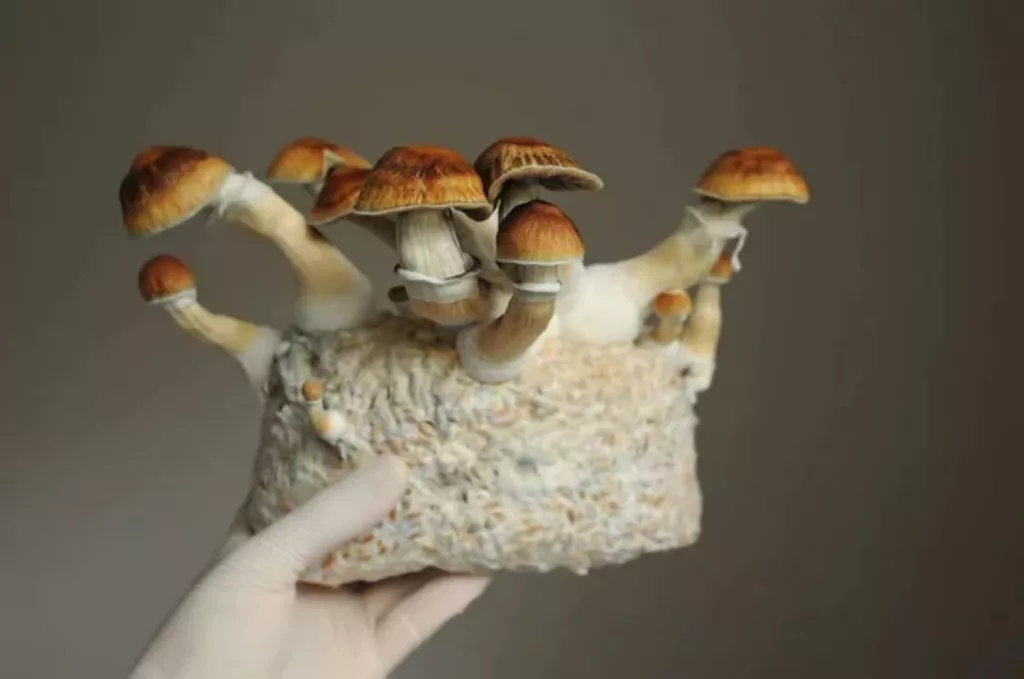
On this page:
Signs of a Fully Colonized Mycelium
Presence of pinheads and a completely off-white substrate
The most obvious sign that your mycelium is fully colonized is the presence of pinning. Primordia forming on the surface of the substrate is a clear indication that the mycelium has fully colonized and is ready to fruit.

This usually occurs within 7–10 days after the culture is fully colonized. Pinning starts when you see white blobs or bumps around the block. These are the hyphal knots that will continue to grow from the surface until they become mushroom pins.
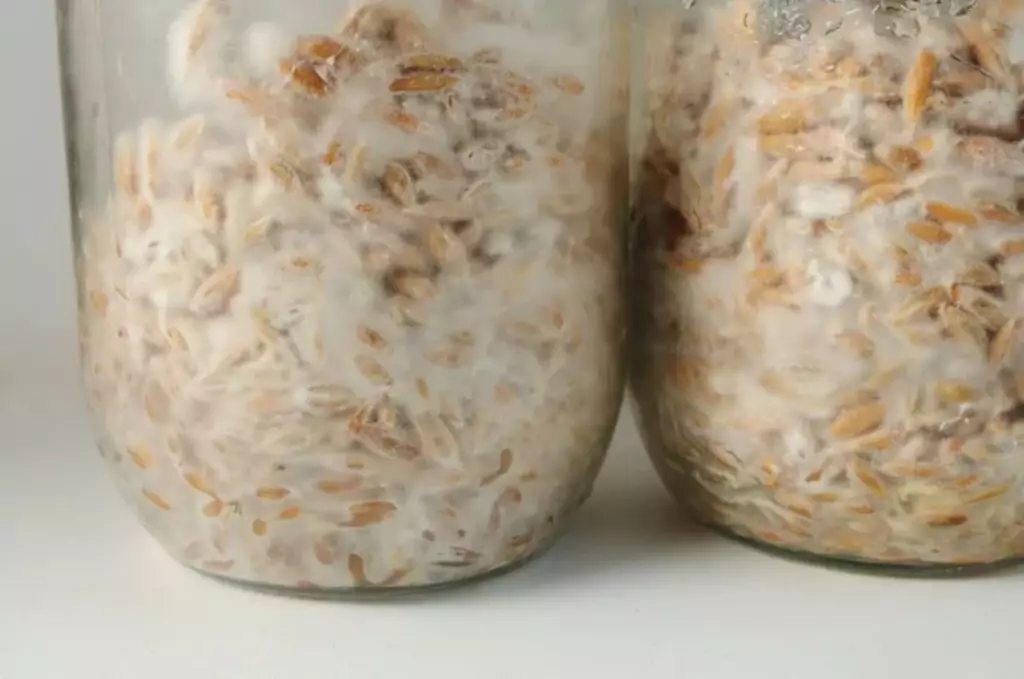
By this time, you will also observe that the substrate is fully covered in white mycelium, indicating that it has consumed all available nutrients. The color of the mycelium should be an off-white color with no brown, blue, or green spots.
The substrate must have a strong earthy odor
Another way to tell if your mycelium is fully colonized is by its smell. Fresh mycelium has a sweet, mushroom-like smell. As it consumes all available nutrients, the smell will change to a more earthy and pungent odor.

When the substrate smells strongly of mushrooms, it is a good indication that the mycelium has fully colonized.
Any unpleasant or foul odors could indicate contamination or a problem with the growing conditions. You may therefore need to monitor the smell of your mycelium when checking if it has completed colonization.
The bulk substrate has a compact texture and must feel firm to the touch
Fully colonized mycelium will have a firm and compact texture. The substrate should be fully covered in white mycelium, and there should be no visible patches of an uncolonized substrate. If the substrate is soft or spongy, it may indicate that the mycelium has not fully colonized.
Benefits of Knowing When Mycelium Is Fully Colonized
Knowing when the mycelium has fully colonized the substrate indicates that the substrate is ready for fruiting, and the bags can be opened to initiate fruiting conditions.
If you wait too long to start fruiting, the mycelium may start to consume the nutrients in the substrate, which can lead to a decrease in yield or even contamination.
Knowing when the mycelium has fully colonized has several benefits:
It maximizes your harvest yield
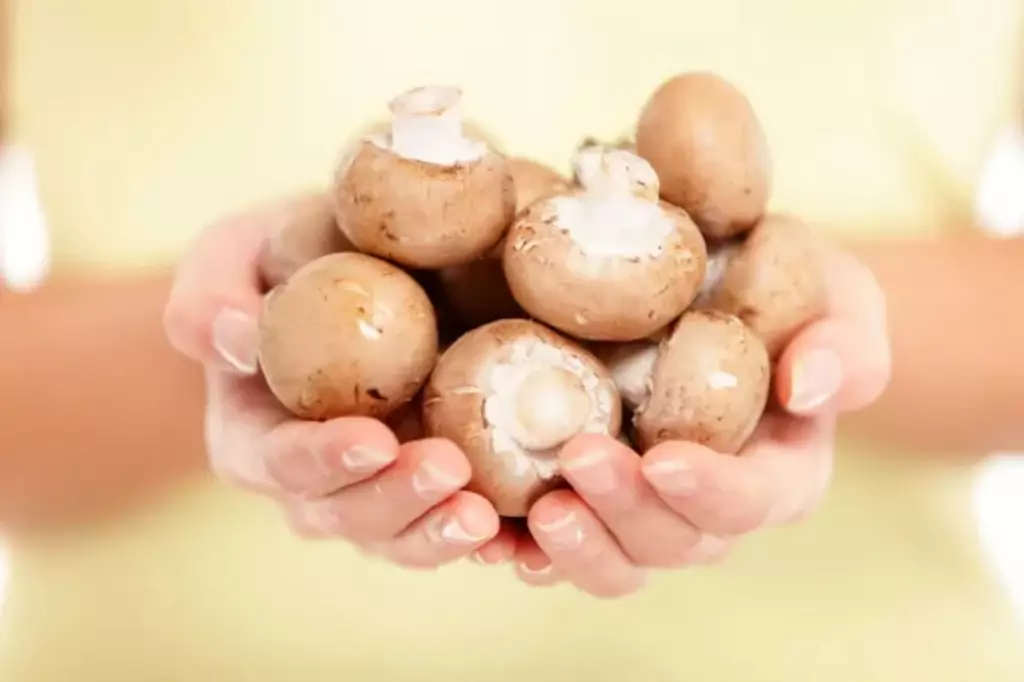
Once the mycelium has fully colonized a substrate, it will soon be ready for harvesting. This is the stage where the mycelium has consumed all the nutrients in the substrate and is ready to produce the fruiting bodies.
If you wait too long, the mycelium may start to consume the nutrients in the substrate, which can lead to a decrease in yield.
Harvesting at the right time ensures that you get the best yield and quality of mushrooms. This can only be done if you start fruiting at the right time.
To trigger mushroom fruiting, you must establish ideal fruiting conditions to create the perfect environment for your mushrooms.
It helps prevent contamination
If you wait too long to harvest, the mycelium can start to break down and decay, which can lead to contamination by other fungi or bacteria. This can ruin your entire crop. By harvesting at the right time, you may help reduce the risk of contamination.
It helps save time and resources
Starting fruiting at the right time can help you save time and resources by maximizing your yield. When you start fruiting too early or too late, you may need to use additional resources such as heat or light to encourage growth.
But if you know the right time to fruit your mycelium, you can use these resources more efficiently and reduce your energy consumption.
Same thing with labor. If you don't know if the mycelium is ready to fruit already and you waited too long, you may need to spend more time monitoring the mycelium and ensuring that it is healthy.
But if you know the exact fruiting time, you can reduce the amount of labor required and free up time for other tasks.
Methods for Checking Colonization

Although we know about sensory cues such as the change in color, texture, consistency, and smell, here are some other proven methods to safely check if colonization has been completed:
Cut open the substrate
A famous method for checking colonization is to cut open the substrate and look inside. This can be done by carefully slicing open the bag or container with a clean, sharp knife.
Once the substrate is exposed, you can check to see if the mycelium has fully colonized the substrate. If there are still uncolonized spots, you will need to wait until the mycelium has fully colonized the substrate before proceeding to the fruiting stage.
Use a sterile needle or toothpick
You can also use a sterile needle or toothpick to check for full colonization. Simply insert the needle or toothpick into the substrate and check to see if it comes out clean.
If there is still uncolonized substrate, the needle or toothpick will come out dirty. If the substrate is fully colonized, the needle or toothpick will come out clean.
Observe under the microscope
If you have access to a microscope, you can take a small sample of the substrate and examine it under the microscope. If you see a network of white, branching filaments, it may indicate that colonization is complete.

